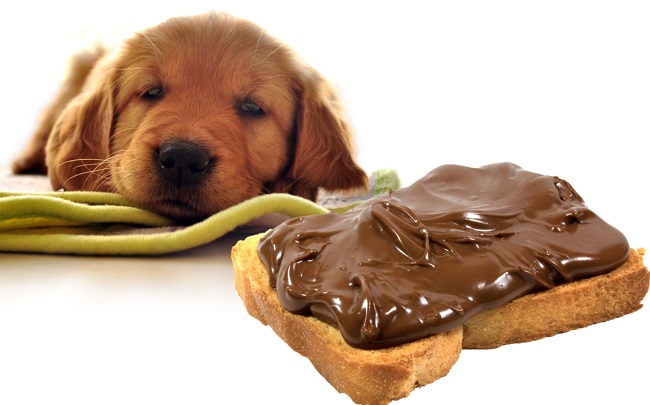
Photo by danielle828 on Pixabay
Introduction
As dog owners, we want to ensure the health and safety of our furry companions. While chocolate is a delicious treat for us, it can be extremely toxic to dogs. Theobromine and caffeine, both found in chocolate, can have harmful effects on our canine friends. In this article, we will explore why chocolate is toxic to dogs, the signs of chocolate poisoning, what to do if your dog eats chocolate, and how to prevent it from happening in the first place.
Why Chocolate is Toxic to Dogs
Chocolate contains theobromine and caffeine, which can cause adverse effects on a dog’s body. When ingested, these chemicals can speed up the heart rate and stimulate the nervous system. The risk of toxicity depends on the type and amount of chocolate consumed, as well as the weight of the dog.
Different types of chocolate have varying concentrations of theobromine. Cocoa powder is the most toxic, followed by unsweetened baker’s chocolate, semisweet chocolate, dark chocolate, and milk chocolate. Theobromine concentrations can be calculated to determine the risk of toxicity. Generally, mild symptoms occur when a dog consumes 20 mg of methylxanthines (theobromine and caffeine) per kilogram of body weight, while cardiac symptoms occur around 40 to 50 mg/kg, and seizures occur at dosages greater than 60 mg/kg.
To put it into perspective, consuming even one ounce of milk chocolate per pound of body weight can have serious consequences. Small dogs are especially vulnerable. It’s important to note that dogs should never be fed chocolate as a treat. Instead, offer them dog-safe alternatives such as treats made with carob.
Signs of Chocolate Poisoning

If your dog has ingested chocolate, it’s crucial to be aware of the signs of chocolate poisoning. These symptoms typically appear within six to 12 hours after ingestion and may last up to 72 hours. They include:
- Vomiting
- Diarrhea
- Restlessness
- Increased urination
- Tremors
- Elevated or abnormal heart rate
- Seizures
- Collapse and even death
Older dogs and those with underlying heart conditions are at a higher risk of sudden death from chocolate poisoning. If you suspect your dog has eaten chocolate, contact your veterinarian immediately or call the Pet Poison Helpline for advice.
What to Do if Your Dog Eats Chocolate

When dealing with a potential chocolate poisoning emergency, it’s crucial to act quickly. The steps you take depend on the amount and type of chocolate consumed, as well as your dog’s size.
- Assess the Situation: Determine how much and what type of chocolate your dog has eaten. This information will help you and your vet determine the level of emergency.
- Use a Chocolate Toxicity Calculator: There are online tools available that can calculate the risk of toxicity based on your dog’s weight and the amount of chocolate ingested.
- Contact Your Veterinarian: Call your vet immediately to seek professional advice. If your vet is unavailable, there are services that provide live chat and video options to connect you with a vet.
- Monitor Your Dog: Depending on the situation, your vet may recommend monitoring your dog for signs of chocolate poisoning. If their condition worsens, contact your vet again.
- Induce Vomiting: If the chocolate was consumed less than two hours ago, your vet may recommend inducing vomiting in your dog. This can help remove the toxins from their system.
- Activated Charcoal: In some cases, your vet may administer activated charcoal to your dog. This substance helps move the toxins out of the body without being absorbed into the bloodstream.
- Veterinary Intervention: For more severe cases, your vet may require your dog to be brought into the clinic. They may provide additional medical treatment, such as medications or IV fluids, to counteract the effects of the poisoning.
- Seizure Monitoring: Dogs experiencing seizures may need to be monitored at the clinic overnight to ensure their safety.
Preventing Your Dog from Eating Chocolate

Prevention is key when it comes to protecting your dog from chocolate poisoning. Here are some tips to keep in mind:
- Keep Chocolate Out of Reach: Store all chocolate items, including cocoa powder and hot chocolate mix, in a place where your dog cannot access them. This could be a high shelf or a closed-door pantry. Remind children and guests not to leave chocolate on countertops, tables, or in purses.
- Teach the “Leave It” Command: Training your dog to respond to the command “leave it” can be highly effective in preventing them from eating something they shouldn’t. Practice this command consistently during walks and at home.
- Crate Train Your Dog: Crating your dog when you’re not able to supervise them is a safe way to prevent them from ingesting harmful substances. Make the crate comfortable and enticing with items like stuffed chew toys, their favorite blanket, or treats.
- Provide Dog-Safe Alternatives: Instead of chocolate, offer your dog treats made with carob or other dog-safe ingredients. There are many tasty options available that can satisfy their cravings without putting their health at risk.
Conclusion
Chocolate can be a tempting treat for both humans and dogs, but it poses significant risks to our furry friends. Theobromine and caffeine, present in chocolate, can be toxic to dogs, causing symptoms ranging from vomiting and diarrhea to seizures and even death. If your dog consumes chocolate, it’s crucial to act quickly and seek veterinary advice. By taking preventive measures and keeping chocolate out of reach, we can ensure the well-being of our beloved pets. Remember to always prioritize their health and offer them safe alternatives to enjoy.
